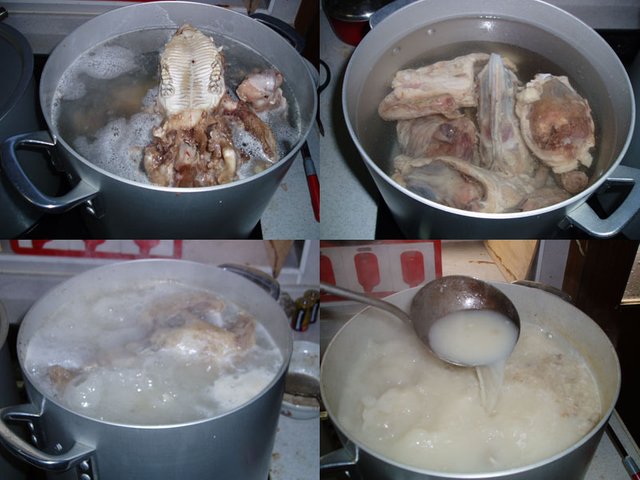Ramen In the Deep South: An Intro to Hakata Ramen
Ramen how I love thee, let me count the ways.
Ramen can be a touchy topic for some folks, you have your miso master race, your shoyu fanboys and even the shio devotees. However, with all of the varying styles of Ramen that are available in the land of the rising sun are good, in my mind there is one undisputed king: the ledgenday Hakata Tonkatsu ramen.
Swine so divine!
Now for anyone reading this that has no idea what I am talking about, Tonkatsu is a special type of ramen that is near and dear to my heart. Tonkatsu means "pork bone" and is where this type of ramen derives its flavor from; the boiling of pork bones for an unreasonably long time.
Some well known chains have have even had the same cauldrons bubbling away continuously for going on half a century. Before I came to find my self living in the southern part of Japan known as Kyushu, I had had many experiences with a vast array ramen styles, but these experiences were limited to Honshu (the island where Tokyo is), and The United States. The reason that it is called "Hakata" ramen is because Hakata is the old name of the city of Fukuoka, which coincidentally is also the largest city on the island, where this particular variety of ramen originated. Before I settled in Kyushu I didn't really know what Hakata ramen was but now that I'm here my eyes have been opened to the power and the glory that is Hakata Tonkotsu ramen.
Al dente kudasai
Tonkotsu ramen is a bit of an esoteric topic for those that are not initiated. A prime example of such knowledge is specifying how hard you want your noodles to be. Now if we are talking ramen in say tokyo, where you are going to get is a thicker noodle more akin to spaghetti, there is no preference given to how hard or soft the noodles are. However, contrary to the boys over in Tokyo, down in the dirty south we like our noodles nice and thin, more reminiscent of an angel hair pasta. In addition, the practice of declaring how soft or hard you want your noodles in Kyushu is a bit of a religious thing and is something that no self-respecting ramen connoisseur would dare forget to make known when placing his order. While there is a scale of terms used for the firmness of the noodles that ranges from extremely hard to mushy soft, by and large from my experiences of listening to other customers order and from various conversations with locals, very hard or "バリカタ" in Japanese (Barikata) is the golden standard of Hakata ramen hardness. Like many things here in the land of the rising sun you must watch and learn how one orders ramen because chances are no one is going to tell you this information.
おいしそうな博多ラーメンですね!チャーシューもいっぱい。
美味しいよ!チャーシューいいですよね!いつかまた九州来たらいい店おすすめします!
Get Daily Reward By Uploading Your Photography on
I usually don't read food reviews but since I'm gonna be down there soon and since it's you I went ahead and read it. Talk and pictures of food don't really entice me, but that bottom pic does look pretty good. I think I'll have that when I'm down there.
Well I hope I can please your palate with some tasty ramen.